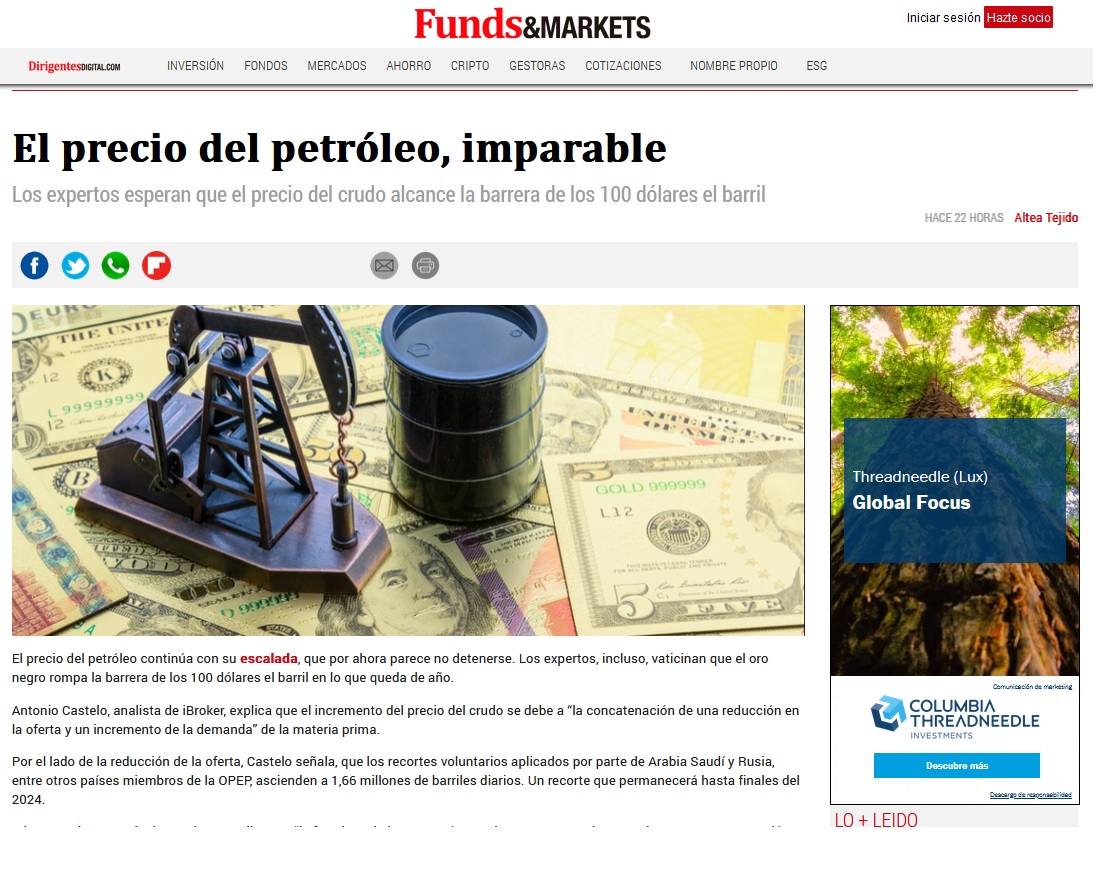
27 Feb Why aren’t we celebrating now that oil prices have surged above $95 per barrel?
Between 2011 and 2014, the international price of oil (known as WTI) surpassed the mythical $100 per barrel several times. In fact, the annual average price for 2013 was $98. Back then, it was all joy and celebration. Revenues from royalties and the Direct Hydrocarbon Tax (IDH) soared, allowing the central government, regional governments, municipalities, public universities, YPFB, the Indigenous Fund, and all institutions receiving “gas money” to thrive. The reason was clear: higher international oil prices meant higher natural gas export prices, increased royalties and IDH revenues, and more spending capacity. Fast forward to the present.
Since the second half of 2021, international oil prices have been rising rapidly. As mentioned in the title of this article, this week, the price surpassed $95 per barrel. This prompts several questions. Why aren’t we as happy as we were in the past? Why are the central and regional governments complaining about a lack of resources? Why do these notable oil prices only bring a faint smile? What’s happening here?
The variable explaining this contrast between past euphoria and today’s moderate satisfaction is natural gas production. According to data from the National Institute of Statistics (INE), in 2014, when international oil prices were high, the annual average natural gas production was nearly 61 million cubic meters per day (mcm/day). Last year, production fell to just under 43 million mcm/day, a decline from 61 to 43, or a 29.5% drop.
Thus, despite high international prices, Bolivia’s current natural gas production (and export capacity) is lower, meaning revenues are nowhere near the fantastic figures of previous years.
To make matters worse, there’s an additional negative effect. Lower natural gas and oil production implies lower domestic production of gasoline and diesel oil, leading to higher imports of these finished products. These imports must be made at international prices. According to the Central Bank of Bolivia, fuel and lubricant imports totaled $1.216 billion in 2014. My preliminary estimates suggest this figure rose to $1.95 billion in 2021—an increase of 60%.
Why does a higher value of fuel imports cause headaches for the state? The answer lies in one word: subsidies.
The higher the prices and import volumes, the greater the subsidy for diesel oil and gasoline. The state’s business model works as follows: buy expensive (from abroad) and sell cheap to Bolivians. And let’s not forget—as I mentioned in a previous article—that it’s not the president, the minister, or legislators who finance these subsidies. It’s all of us taxpayers. Through our taxes, the state funds the process of “buying expensive to sell cheap.”
You might wonder, “Why should I care about all this? Does it affect me in any way?” My answer is: in many ways.
If you work in the public sector and suddenly there’s “no money for more positions,” this is due to lower fiscal revenues from gas.
If your bank notices an increase in loan defaults, especially from construction companies, this is likely because municipalities and regional governments are receiving far less Direct Hydrocarbon Tax revenue than before, leading to public investment financing issues.
Lastly, when was the last time you received a double Christmas bonus? Yes, I know 2020 was due to COVID-19, but only that year. The decline in economic growth is partly due to lower gas exports.
I focused on the microeconomic issues because the macro-ones—such as higher fiscal deficits, a decline in Central Bank reserves, increased gasoline imports, a growing current account deficit, GDP deceleration, fines paid by YPFB, and amendments to contracts with Brazil and Argentina to reduce volumes—might seem far removed from daily life. But they exist, nonetheless.
To conclude, I’d like to pose a challenge in the form of a question. What other Bolivian economic sector could replace natural gas? Is there another sector capable of contributing over 50% of its gross revenue in taxes? (Yes, gross revenue.) Or perhaps we should stop focusing on tax burdens and instead prioritize the employment and private investment contributions of each economic sector. Is the size of the Bolivian government/state appropriate?
The challenge stands.
S. Mauricio Medinaceli M.
La Paz
February 27th, 2022



No Comments